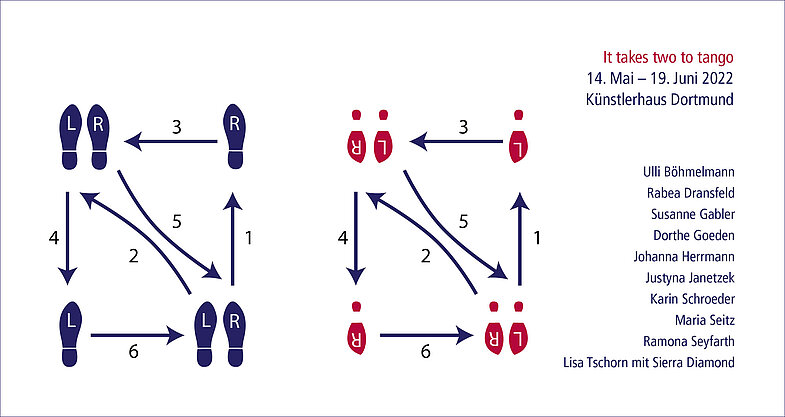
"Two to really get the feeling of romance. The romantic feeling sung about in the song, which was written in 1952, is unlikely to occur in the exhibition. Since Ronald Reagan's 1982 quip about Russian-American relations, the metaphor has regularly appeared in the headlines of the international press and has become a proverbial expression that has even found its way into American legalese.
The individual artistic positions are as broad in their appearance and intention as the metaphorical meaning of the exhibition title. Artistic works dominate in which a great affinity to rhythm, structure, materiality and movement resounds. These elements, which can be found both in tango as a dance and in tango music, characterise the exhibition.
What all the invited artists have in common is that they are all participating or have participated in the art mentoring programmes in Mecklenburg-Vorpommern or North Rhine-Westphalia, either as mentees or mentors. The artist Anett Frontzek has been involved in both programmes for several years, which she now links by curating the exhibition. "It takes two to tango" offers some female artists the opportunity for a romantic, playful, intellectual or serious round on the art parquet.


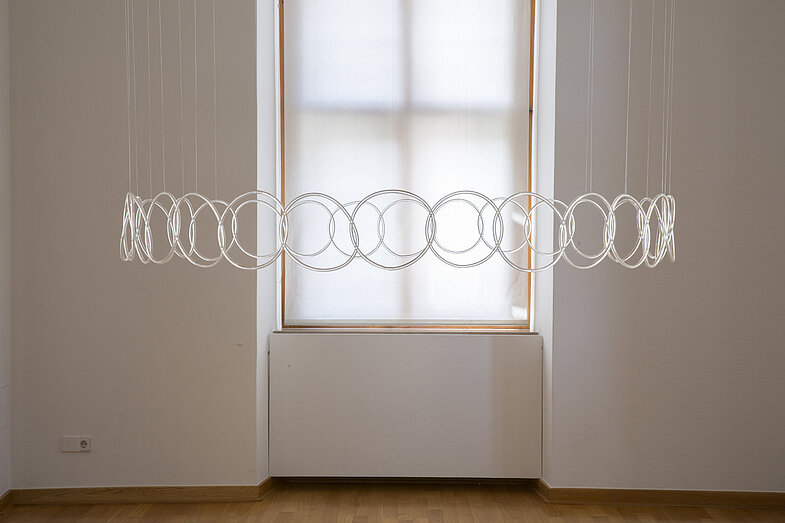
The emphasis of my artistic work has been placed on site-specific installations that deal with the perception of space and temporal/spatial distances. In doing so, I incorporate the specific history of the location and the particularities of the architecture in my installations or place the focus on intermediate spaces that until now have not been perceived.
I utilise light, transparent materials that are suspended into or tensioned in the space and bring about a new division of the space. Previous coordinates of the space recede into the background. The visitor leaves familiar paths and changes his movement structures to pass through the exhibition space. This encourages reflection on everyday movement patterns and the own location.
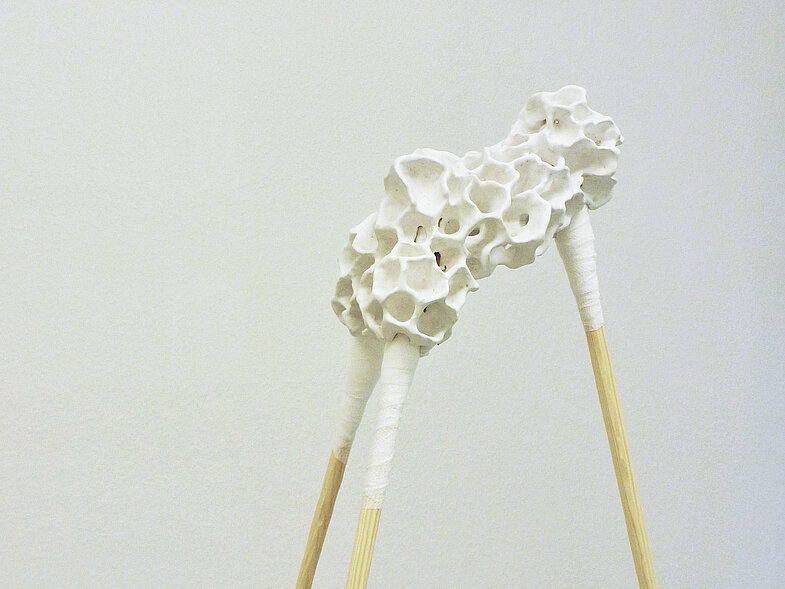
„Processes of change, growth or decay characterize the forms of Rabea Dransfeld's object art. The objects appear to be evolving and going through an evolution even though they are not alive. With these formal and material similes of animate and inanimate, of biological and geological items and especially the analogy of art and nature, Dransfeld stands in the tradition of the cabinets of art and curiosities. With alchemical animations, the artist investigates the properties of materials and examines their transformation. Coincidence is a vital aspect of her work, thus respectfully giving the material time and space to have a life of its own. It is allowed to unfold so that its own effectiveness becomes visible.“ (Christina May)
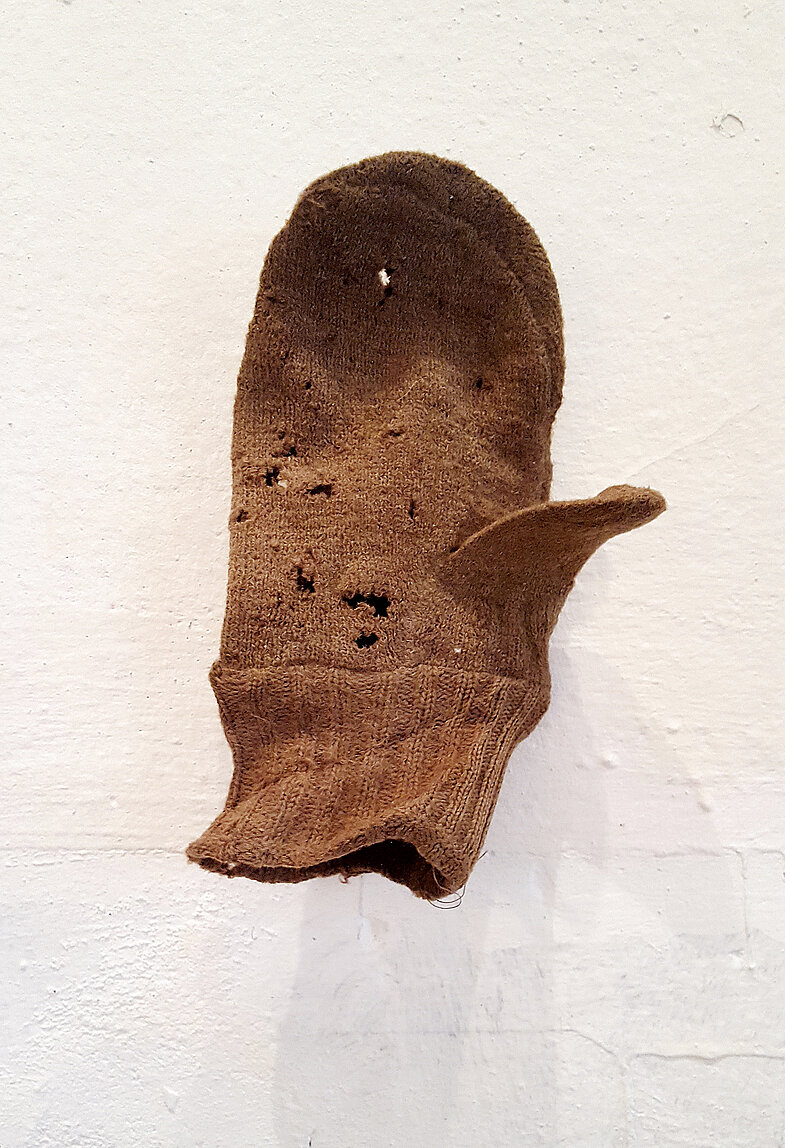
FOUND
Too much work, too far, too long absence, too broken, too dirty, too different, too big, too small, too inappropriate, too scary, too taken, too dark, too monotonous, too much experienced, too little experienced, too colourful, too boring, too silly, too modern, too old, too politically incorrect, too peculiar, ...
... there are many reasons that make it difficult to find a suitable second.
In this installation, pairs are exhibited: each pair consists of a lost glove and a contact ad from the newspaper „Magazin“.
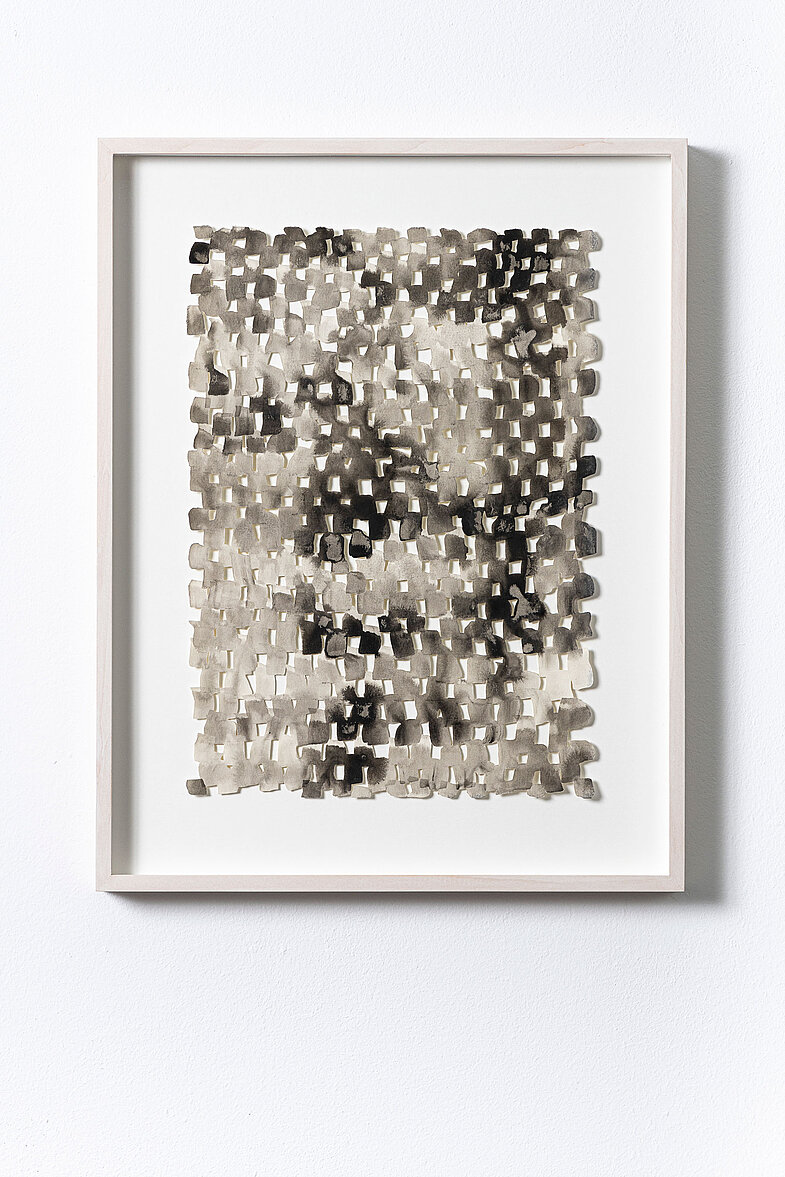
The basic element of Dorthe Goeden's works is the line. Whether drawn or cut, it signifies a distinction that gives rise to a form. This is based on the idea that the form thus created always consists of two parts that relate to each other, namely simultaneously of what it is and what it is not. In this way, the paper cuts, some of which are large-format, thematise the relationship between the present and the absent. The line is thereby detached from the graphic idea of two-dimensionality, thus questioning the boundaries of image, object and space. Small-format drawings, concrete fragments of experience and memory reduced to the essential, form the starting point. Set pieces for complex works are taken from them. Reduction and rhythmisation determine the picture. Dorthe Goeden understands rows and reflections as spatially ordering moments. She is interested in repetition processes and the possibilities that open up in the small deviations of craft precision and their mental reflection. Against this background, she has developed works in recent years that are built up from repeating fragments and create three-dimensionality.
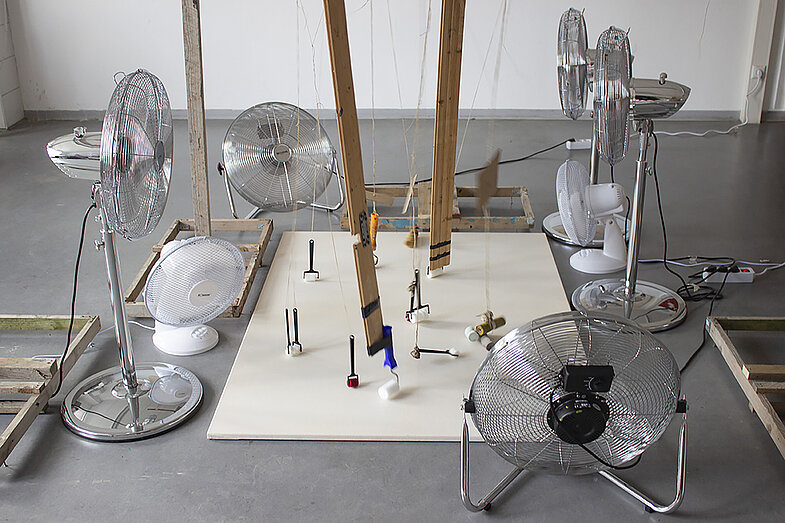
Johanna Herrmann works interdisciplinary; her artistic research is conceptual and at the same time playfully experimental. The artist plans and realizes experimental arrangements and moveable equipments, which she leaves out of her control at a specific point of time so that they can follow their own laws. They are left to a natural process or to chance. Thus the result remains open at first sight. The overall artistic process is the focus in Johanna Herrmann‘s installations, which is characterized by movement sequences and the surrounding landscape. Due to its diverse processes and variabilities, the landscape is an attractive point of origin for the artist, which can be followed by explorational controversies with artificial phenomena.
By use of that playful and experimental work, Johanna Herrmann‘s artistic work is characterized by balancing and equilibrium – the possibility of failure is an essential part of her work.
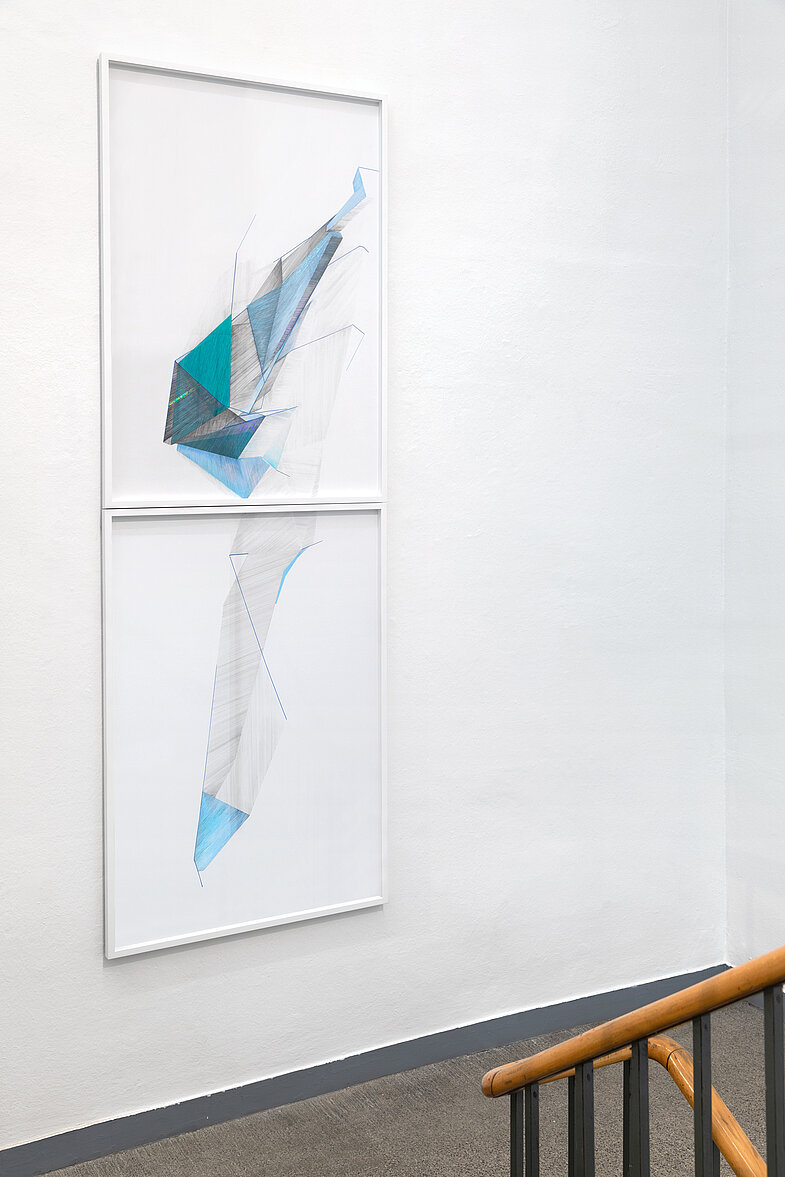
"Justyna Janetzek's drawings, which seem closed in themselves, are anything but closed forms: from a distance, they are reminiscent of formations in space, up close of extensions of what is not materially there at all, and in the context of art, of possibilities that arise by being transformed into three- dimensional spaces of possibility.“ (Michael Kröger)
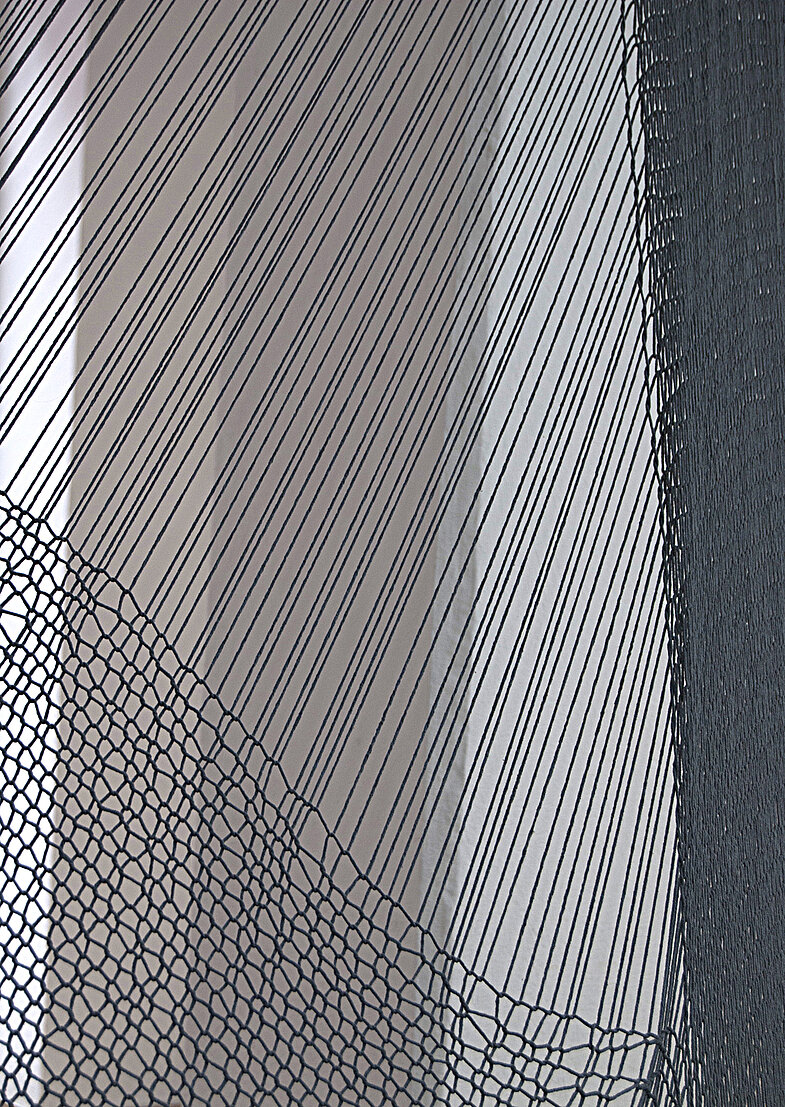
„Raumgestrick 4.1, 2022 / A drawing in space“. The thread becomes a line, the three-dimensional drawing stretches out in space. Filigree spatial knitted fabrics made of wool or thin rope, firmly connected to their location, receive their form and tension in the interplay with it. An interplay between stability and flexibility, between line and surface, between two- and three-dimensionality, as it seems to be anchored in knitting itself and in the knitted fabric itself.
The knitted site-specific installations have their origins in drawings of the work complex „gestrickt-gezeichnet". Raumgestrick 4, originally conceived for the solo exhibition "Fadenspannungen" at GalerieN in Nienburg, will be expanded and modified for the exhibition "It takes two to Tango" and will enter into a new site-specific connection with the exhibition space as Raumgestrick 4.1 at Künstlerhaus Dortmund.
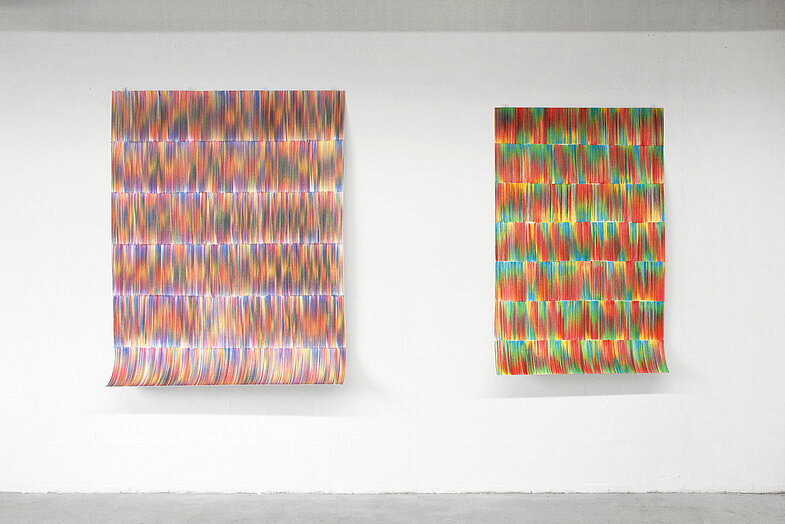
Maria Seitz works in the field of drawing and installation. Serial structures and repetitive methods are basic aspects of her work. In a systematic drawing process, she brings subtle phenomena to visibility through strategies of repetition, series and sequence. With minimal graphic means, she generates complex textures and color spaces, characterized by regularity and difference, even structure and moving variance.

In the centre of the room, I lay the red carpet [RED CARPET] on the floor. In 2013, "woven" from glass and fragmentary memories, I confuse myself about the question of whether this is my story ... .
The past moves into the immediate present when I return to the collective of my student days in Rhineland-Palatinate in 2020 and spend 24 hours awake in the Kunstforum there. The observed time is documented in a multi-part photo series. Their condensation transforms my specific experience and entangles it with abstract ideas of how time itself can be made visible.
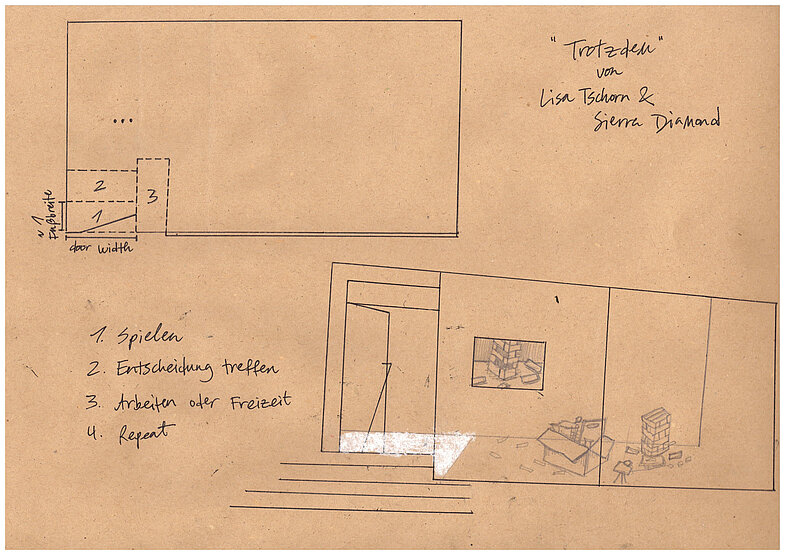
We work,
we take care of ourselves and others,
we fall in and out of love,
we hurt and get hurt,
yet we live.
"Trotzdem" is a performance by Sierra Diamond and Lisa Tschorn in which they gradually and systematically cover/paint the floor of the exhibition space with chalk in a session that lasts several hours.
During the performance there are two roles assigned by playing games of chance and skill.
If the visitors want to take a look at the exhibition, they will inevitably need to step on the chalk layer and destroy it.
www.lisatschorn.eu
www.sierradiamond.squarespace.com